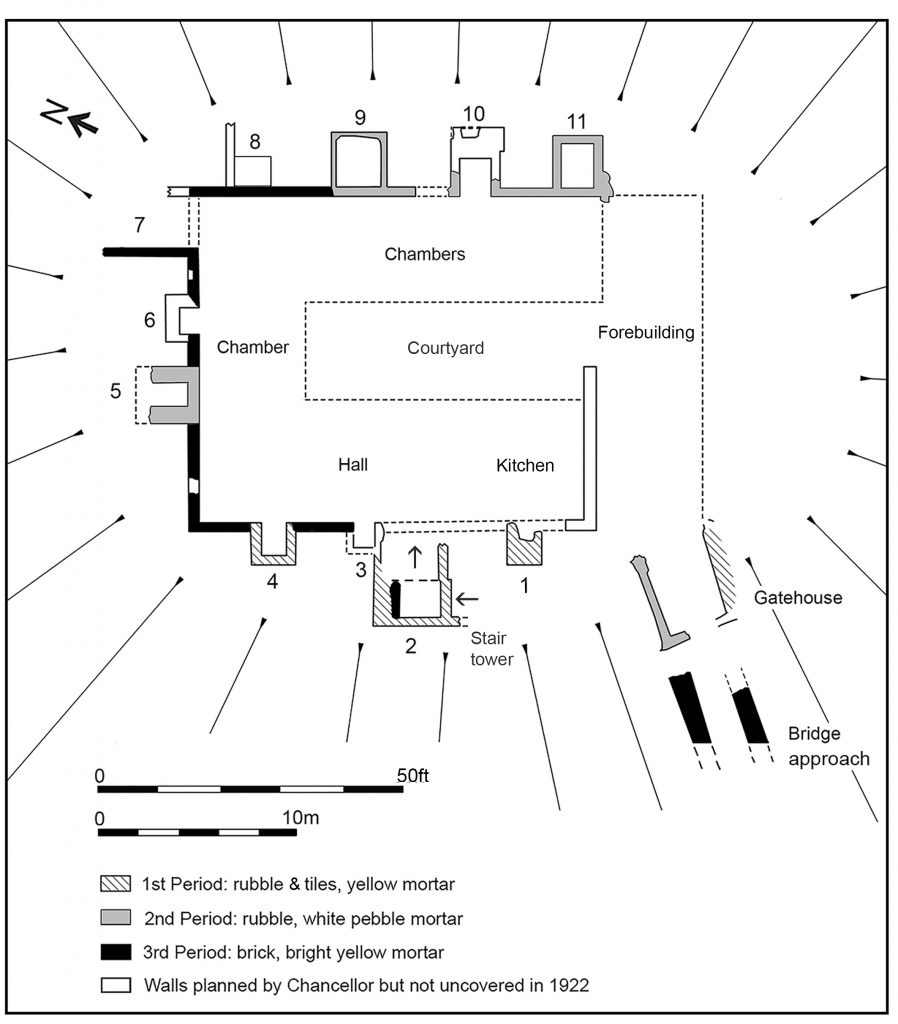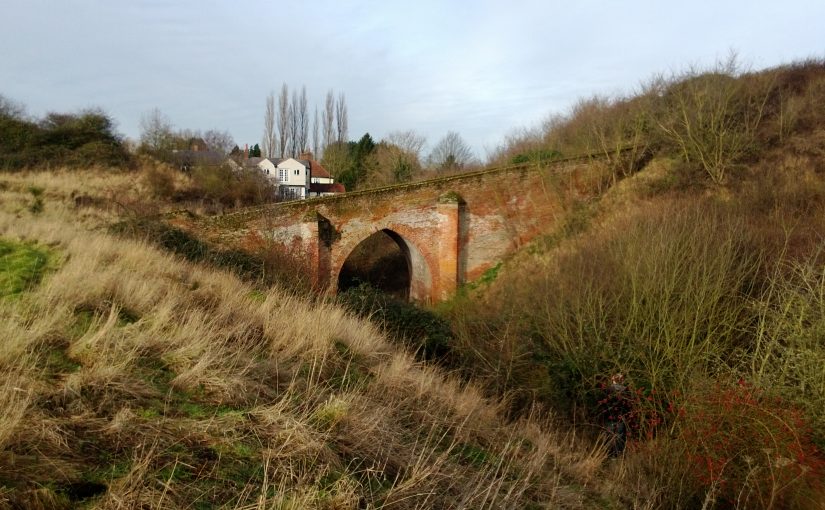If you visit Pleshey Castle on one of its open days, you are struck by the size of the place. The castle was probably founded by Geoffrey I de Mandeville in the late 11th century, and while no buildings survive above ground the earthworks are impressive. Excavations at Pleshey in the 20th century uncovered a tower or keep on top of the motte, and buildings in the south bailey. The Castle Studies Trust and Chelmsford Museums Service are working together to interpret the results and make sure they are publicly available.
The castle is laid out in three segments: a north bailey, a south bailey, and a motte in between. The northern bailey, which contained a small market place, has been built over, but the motte and the bailey to the south still survive. A timber keep probably stood on top of the mound, and was modified over the 13th, 14th, and 15th centuries.
The keep had a courtyard at the centre, with ranges along the north, west, and south sides, and a forebuilding to the east. The south range contained a hall (important for entertaining guests) and a kitchen (important for keeping the guests fed!). It was probably built after 1167, which was when William II de Mandeville was given permission to refortify the castle after it had been slighted.

In the mid-13th to mid-14th century, the keep on the motte was clad in flint, and the hall refurbished. In the late 14th century the living accommodation on the north and east sides of the keep was renovated, and fireplaces and garderobes (privies) were added.
Starting in 1458, the keep was clad in brick, replacing the flint walls. The work was ordered by Queen Margaret of Anjou and records from the Duchy of Lancaster (researched by Pat Ryan) mean we know a lot about how the work was carried out. A new bridge over the inner moat was built entirely in brick in 1477-80, and the gatehouse to the forebuilding was reconstructed in brick in 1482–83. Brick castles are not very common in England, but you can see an excellent example at Tattershall in Lincolnshire.
The chronology of the mid-15th-century changes to the castle should be understood in the wider historical context of the Wars of the Roses. The major refurbishment of the keep in brick was ordered by Queen Margaret of Anjou, but the outbreak of civil war in 1459–61 led to the usurpation of Henry VI by the Yorkist Edward IV, and Margaret went into exile. Edward IV ordered a refurbishment of the castle buildings when he married Elizabeth Woodville in 1464-5 and Pleshey was granted to her as part of her jointure. However, Edward IV was hard-pressed in the 1460s and had to fight to regain his throne in 1470–71, and most of the building works in this period appear to be routine repairs. The rebuilding of the bridge and keep gatehouse in brick in 1477–83 after an interval of 20 years appears to be the completion of Queen Margaret’s scheme of building works in quieter and more prosperous times.
This blog post was prepared by Patrick Allen and Richard Nevell. The photograph of the bridge is copyright Patrick Allen.

One thought on “Keeping up with Pleshey”